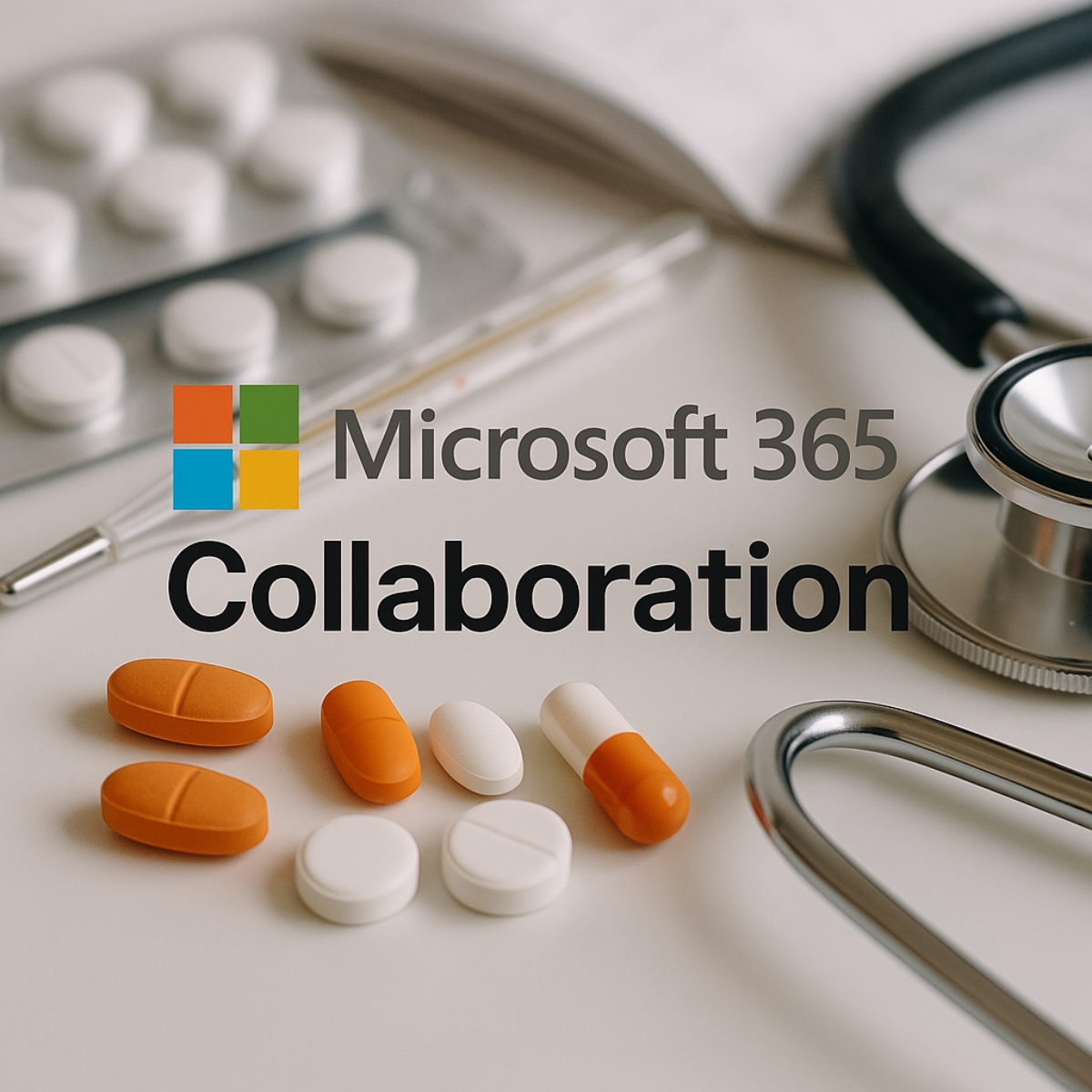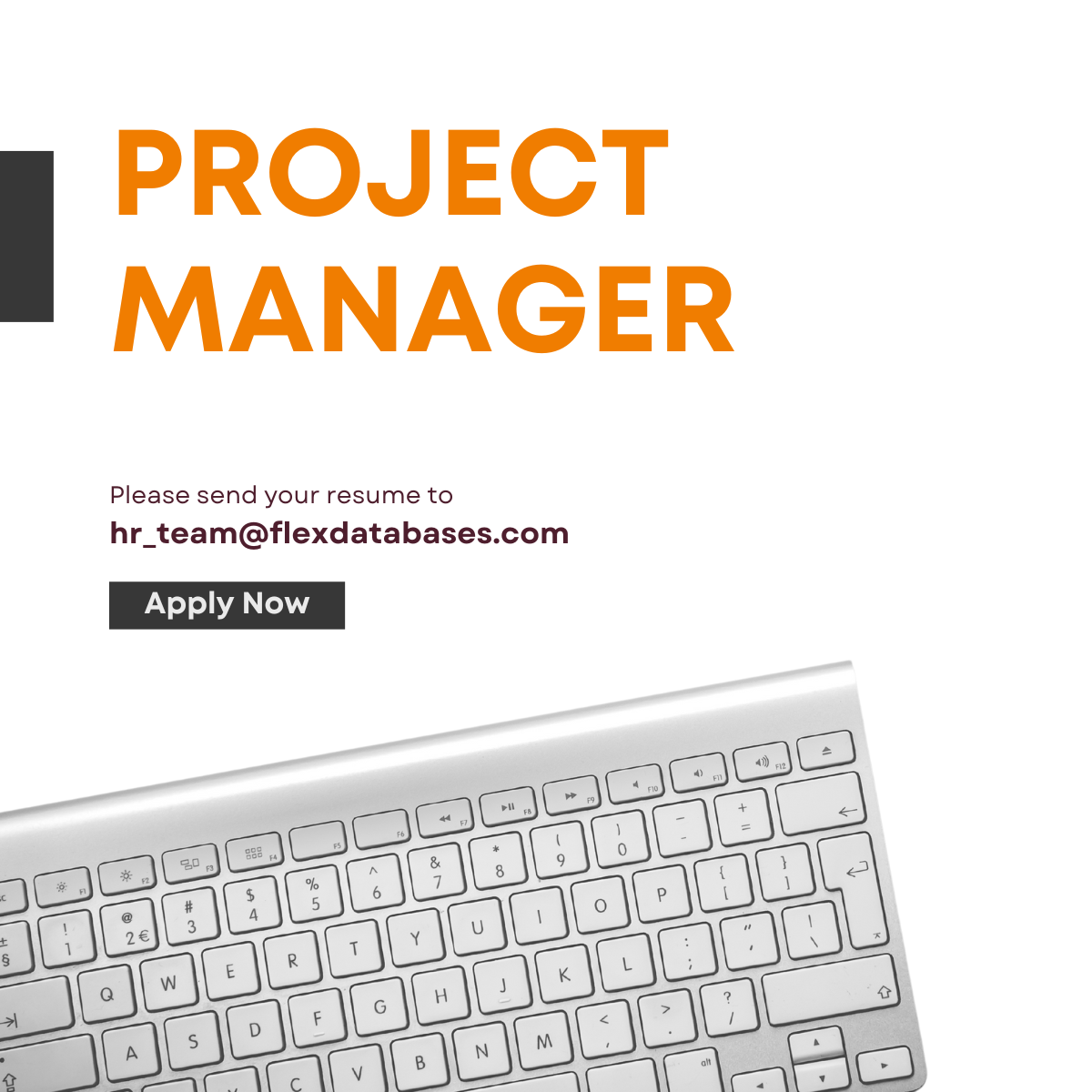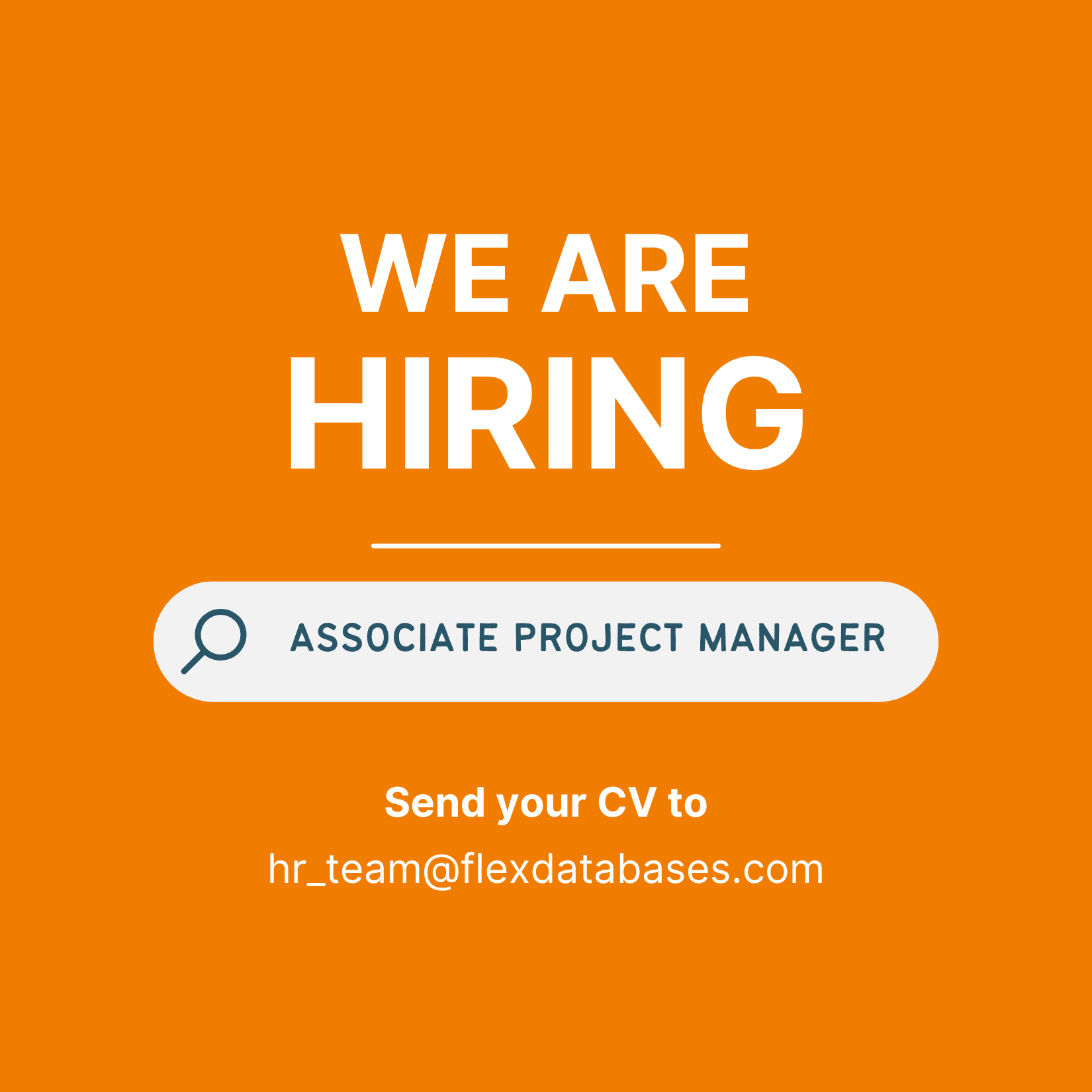What CROs Should Look for in CTMS and eTMF During a Tender
September 2, 2025
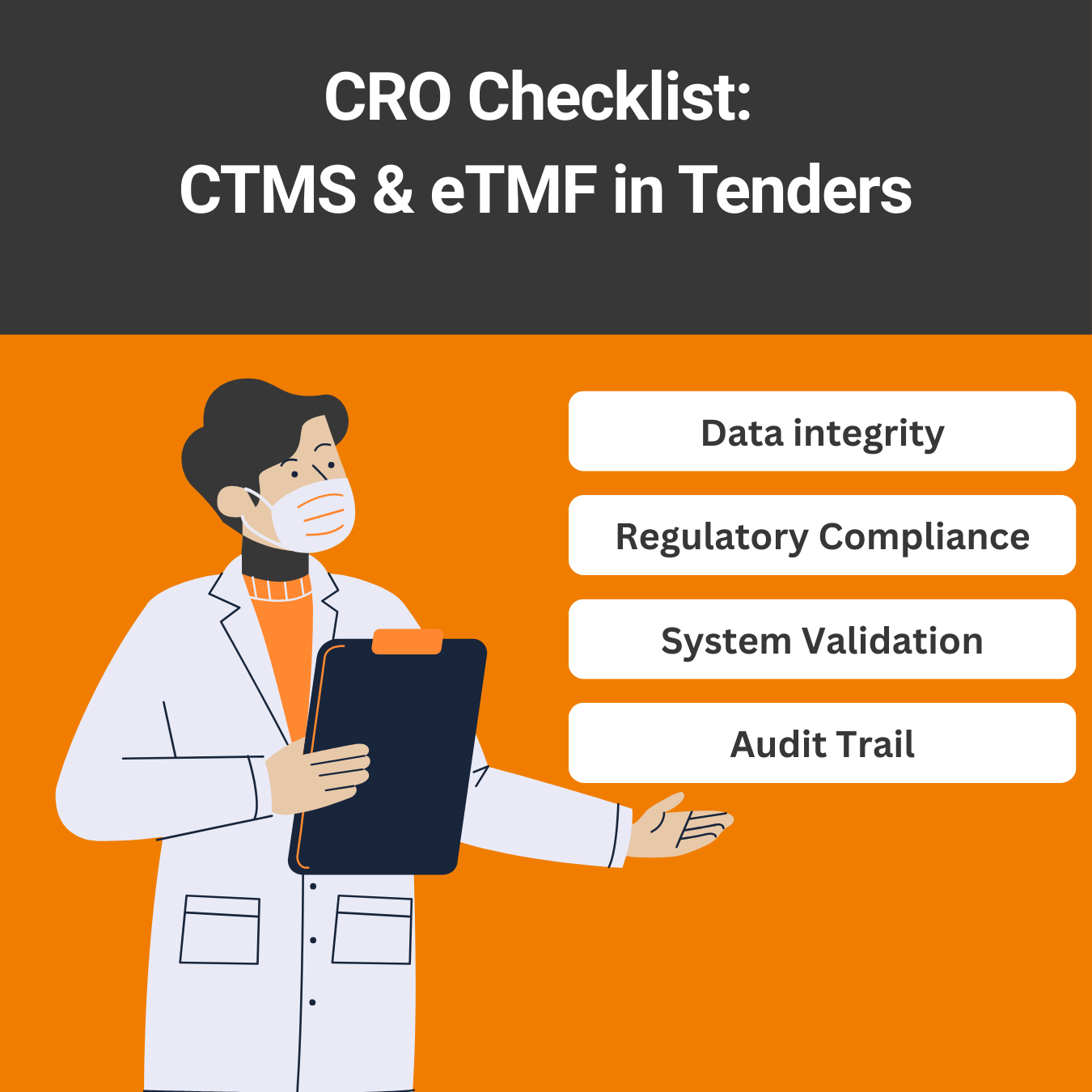
When preparing a tender for a Clinical Trial Management System (CTMS) and an electronic Trial Master File (eTMF), CROs must choose solutions that meet sponsor expectations and improve operational efficiency while keeping studies inspection-ready. The right choice affects study delivery, compliance, and client satisfaction. Below are the key factors CROs should consider.
Regulatory Compliance and Inspection Readiness
Core standards to require
- ICH E6(R3) principles. Risk-based quality, proportionate controls, clear roles.
- FDA and EMA GCP expectations.
- 21 CFR Part 11 and EU Annex 11 for electronic records and signatures.
- GDPR and local data protection laws where you run studies.
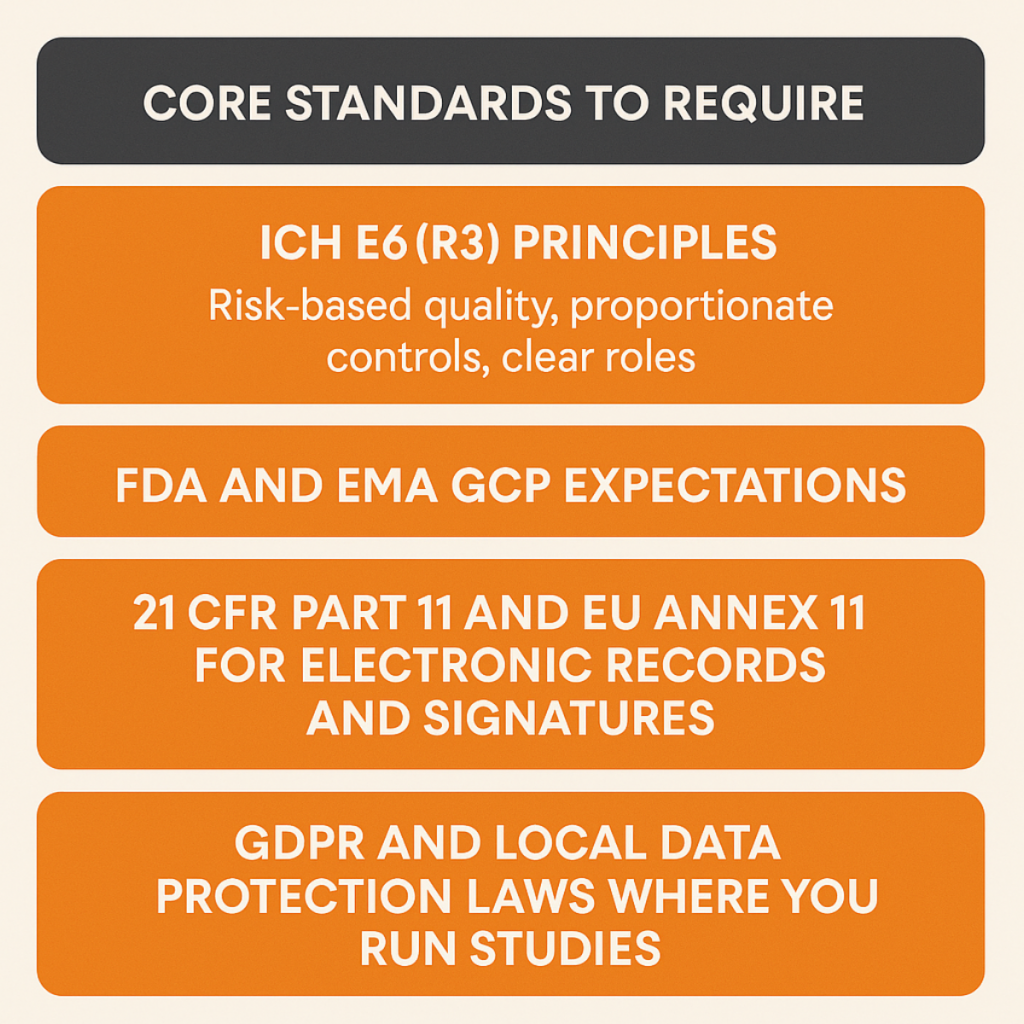
Computer system validation (CSV)
- Vendor provides a full validation package: URS, risk assessment, IQ/OQ/PQ, test evidence, traceability matrix.
- Clear change control. Define when re-validation is required.
- Periodic review schedule and results.
- Validation covers integrations and custom configurations, not only the base product.
Electronic signatures
- Unique user IDs. No shared accounts.
- Signature captures who, what, when, and why (intent and meaning).
- Signature shows on the record (name, date/time, reason).
- Time stamps with time zone and sync to a trusted time source.
- Optional MFA/2FA for high-risk actions.
Audit trail (both CTMS and eTMF)
- Captures old value, new value, user, date/time, and reason for change.
- Immutable and not editable by admins.
- Logs view/print/export events for sensitive records.
- Search, filter, and export of audit trails on demand for inspectors.
- “Point-in-time” snapshot possible for a given date.
Access control and security
- Role-based access and least-privilege by default.
- Segregation of duties (e.g., creator ≠ approver).
- SSO (SAML/OIDC) support, SCIM for user lifecycle, MFA option.
- Strong password policy and automatic session timeout.
- Sponsor-view roles with read-only access.
Data integrity (ALCOA++)
- Records are Attributable, Legible, Contemporaneous, Original, Accurate.
- Document versioning with full history.
- Lock after approval/signature; controlled supersede process.
- Checksums on files and hash verification on export (nice to have).
- Watermarks on downloaded PDFs if required by sponsor.
eTMF-specific compliance
- Alignment with the DIA TMF Reference Model (structure, naming, metadata).
- Expected document lists by study/country/site.
- Completeness, timeliness, and quality metrics out of the box.
- QC workflows and dual review where needed.
- Read-only “inspection view” and rapid export for authority requests.
Inspection readiness features
- Study health dashboards with overdue/missing items.
- Prebuilt reports for milestones, essential documents, and issue trends.
- Redaction tools and secure document sharing.
- Training materials and SOP templates from the vendor.
Data protection and continuity
- Data residency options and named subprocessors.
- Encryption at rest and in transit.
- Backup and disaster recovery with stated RTO/RPO and test evidence.
- Legal hold and retention policies you can configure.
Ease of Use and User Adoption
Ease of use defines whether a CTMS or eTMF will be truly adopted. CRO staff are busy, and if the system is hard to navigate, they will avoid it or turn to spreadsheets. This creates gaps, errors, and frustration for both the CRO and the sponsor.
The system should be intuitive and fast:
- Clear navigation with minimal clicks.
- Responsive design for desktop and tablet.
- Role-based dashboards that show only what each user needs (CRAs, PMs, document staff, sponsors).
Training must be light. Most users should be ready after short role-based sessions or self-learning modules. Extra value comes from contextual help, quick guides, and a training sandbox.
Performance is just as important. A system that loads slowly or crashes often will never be trusted. Look for:
- Page loads under two seconds for main views.
- Stable performance on standard browsers.
- Options for low-bandwidth use by field staff.
When the platform is simple, fast, and role-focused, adoption rates grow. This leads to fewer errors, better collaboration, and a smoother experience for sponsors during audits.
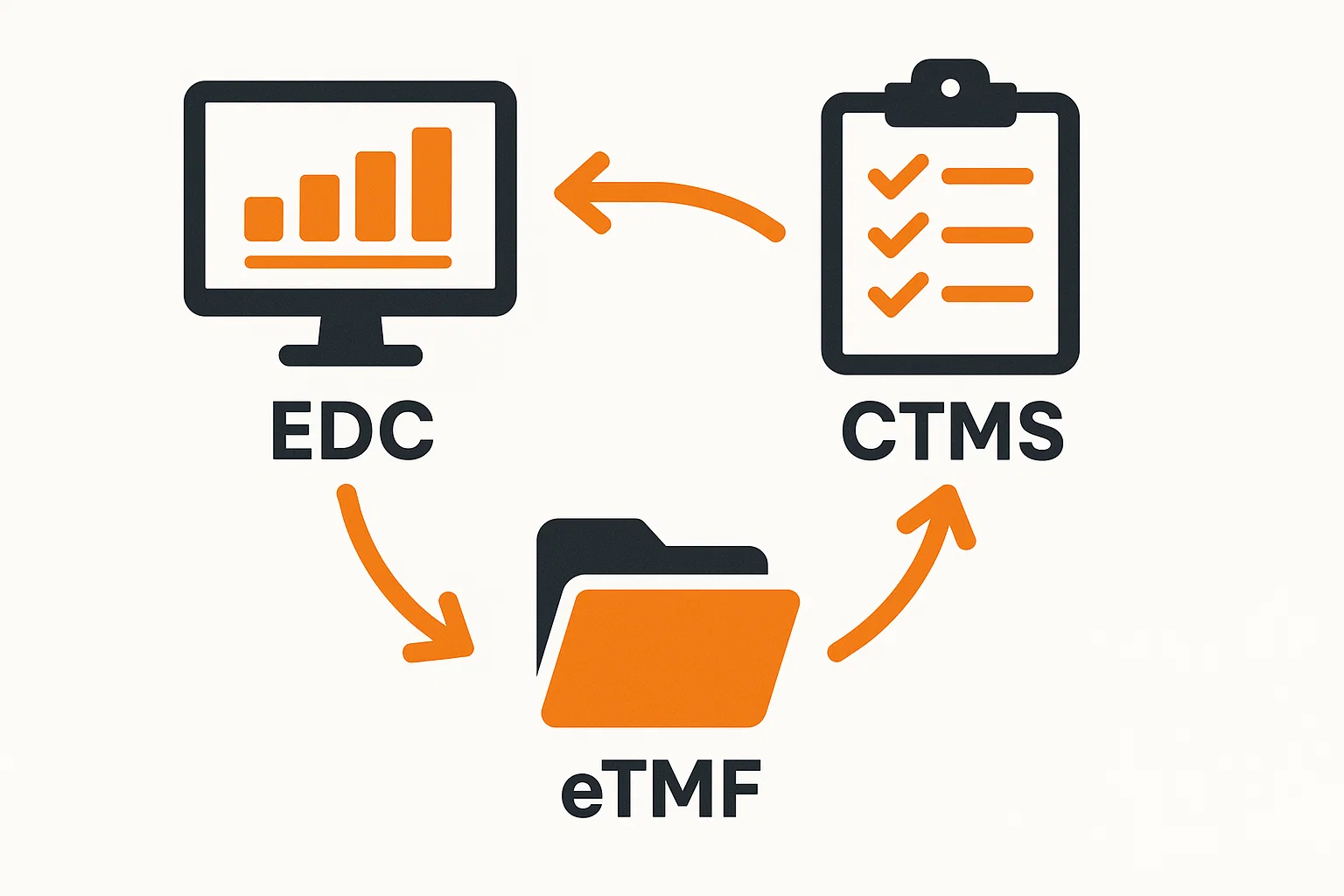
Integration Capabilities
Smooth data exchange is no longer optional. Sponsors expect CROs to provide real-time access and reduce manual transfers between systems. A CTMS and eTMF that integrate well create a single source of truth and cut down on errors.
Key integrations to look for:
- EDC system for subject, site, and enrollment data.
- Toll to manage pharmacovigilance workflows.
- Financial tools for budgeting, payments, and invoicing.
An API-driven architecture is especially important. It allows systems to connect quickly today and remain scalable for new technologies tomorrow.
Flex Databases offers all these capabilities. Our CTMS and eTMF are built with open APIs, making it easy to link with any EDC, safety, or financial system, as well as with sponsor environments. This gives CROs confidence that their operations will stay connected, efficient, and ready for future growth.
Oversight and Transparency for Sponsors
Sponsors expect continuous visibility into study progress. CROs must provide tools that give real-time insights without adding extra workload for their own teams.
The right CTMS and eTMF should include:
- Dashboards and reports that update in real time.
- Role-based sponsor access, so they can track progress safely and without interfering in CRO workflows.
- Milestone tracking, KPIs, and timelines that show where the study stands.
- Document completeness and quality reports, proving that the eTMF is always inspection-ready.
This level of transparency builds sponsor trust and strengthens CRO credibility during audits. Flex Databases delivers all these features out of the box, helping CROs demonstrate oversight, stay compliant, and keep sponsors fully informed.
Flexibility and Scalability
CROs manage very different studies: from small early-phase projects to large global trials. A CTMS and eTMF must adapt to both without costly customizations or long setup times.
Important points to consider:
- Scalability – the system should handle a single-site pilot as easily as a multi-country program with hundreds of users.
- Flexible configuration – workflows, roles, and templates should be adjustable without vendor coding.
- Cloud-based delivery – ensures quick deployment, easy updates, and secure access for global teams.
- Multi-study and multi-sponsor support – CROs should be able to manage several projects at once without confusion or data overlap.
Flex Databases was designed with this in mind. Our CTMS and eTMF scale seamlessly with study size and complexity. CROs can configure workflows and templates for each sponsor while keeping operations centralized and efficient.
Document Quality and Automation
Managing thousands of trial documents across multiple studies is one of the biggest challenges for CROs. Manual processes slow teams down and increase the risk of errors. Modern eTMF and CTMS solutions should actively support document quality and reduce manual workload.
Key features to look for:
- AI-assisted filing – automatic document classification and metadata assignment.
- Quality control workflows – built-in checks and approval steps to ensure accuracy.
- Alerts and reminders – notifications for missing, overdue, or expiring documents.
- Version control – complete history of edits and approvals, with older versions securely stored.
- Consistency across projects – standardized templates that make sponsor handovers faster.
Flex Databases includes all of these capabilities. Our eTMF uses smart automation to speed up filing, maintain high document quality, and keep studies inspection-ready at all times. CRO teams spend less time on repetitive tasks and more on value-added activities for their clients.
Cost Transparency and Value
Price is always an important factor in a tender, but the lowest offer does not always bring the best results. CROs should look at the total cost of ownership, not just the license fee. A system that saves time, avoids errors, and increases sponsor confidence often delivers far more value than a cheaper alternative.
Points to evaluate:
- Licensing model – per user, per study, or enterprise-wide.
- Implementation and training costs – hidden expenses can add up quickly.
- Support and upgrades – check if ongoing improvements are included or billed separately.
- Customization fees – too many add-ons can make the system expensive and hard to maintain.
Flex Databases offers clear and predictable pricing. Our CTMS and eTMF combine advanced functionality with transparent cost structures, so CROs know exactly what they are paying for. More importantly, the value comes from reduced manual work, faster study execution, and stronger sponsor relationships.
Vendor Support and Long-Term Partnership
Choosing a CTMS or eTMF is not just about the product; it’s about the partner behind it. CROs need a vendor that offers reliable support, deep industry experience, and a commitment to long-term collaboration.
Key aspects to consider:
- Customer support – fast response times, knowledgeable staff, and multiple contact channels.
- Implementation assistance – help with setup, data migration, and user onboarding.
- Continuous improvement – regular updates, new features, and proactive advice.
- Global presence – support across time zones for international studies.
Flex Databases has clients of all sizes working with us over the long term, trusting our systems and services for multiple projects. This demonstrates our reliability and commitment to helping CROs succeed today and in the future.
